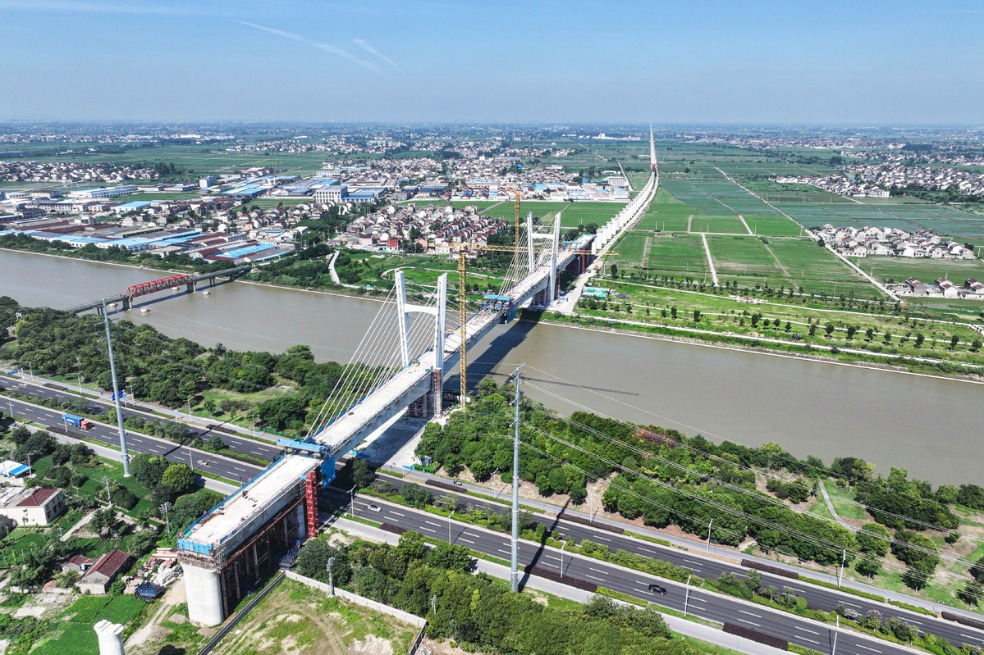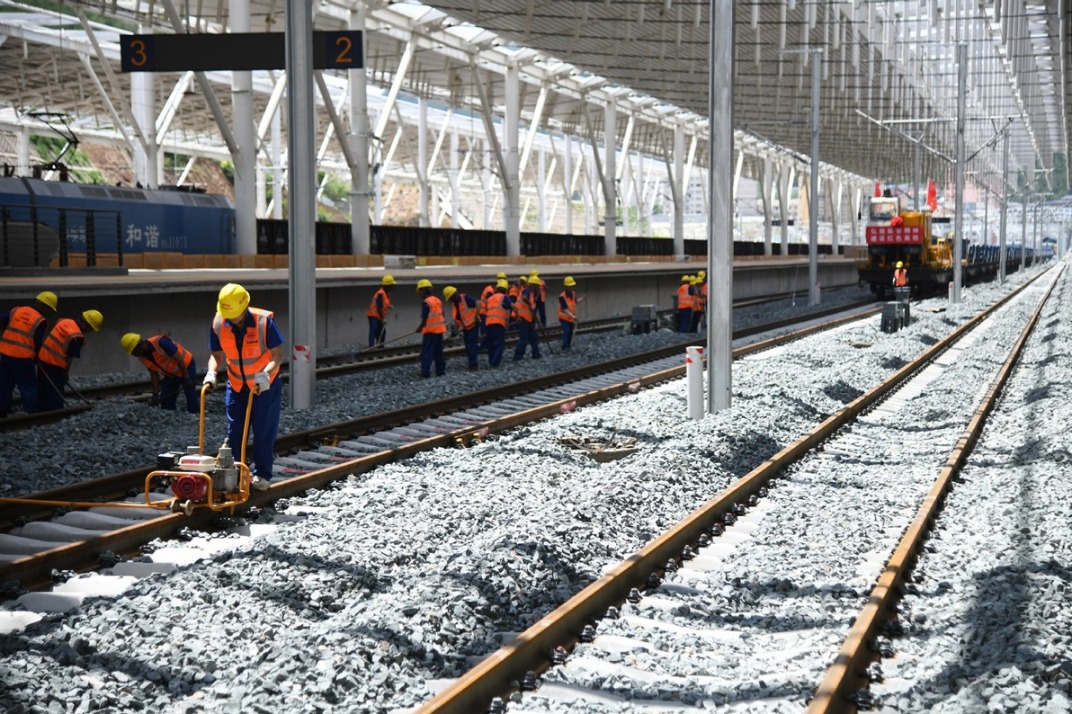Cross-boundary commute — a long hard stretch


Workers commuting regularly between Hong Kong and Shenzhen have found their routines and careers upended by the stringent travel restrictions to fight the pandemic. Experts say remote working could also trigger other problems like tax and social insurance liabilities. Edith Lu reports from Hong Kong.
As tens of thousands of Hong Kong residents scrambled in the past two weeks to return to the Chinese mainland for the upcoming Lunar New Year family reunions, their agony and suspense in having been separated from their families for so long have become very clear.
For many in the long queues snaking into Shenzhen Bay Port — one of only three land, sea and air entry points between Hong Kong and the mainland that have remained open since Feb 4 — they've not seen their families or loved ones for a year due to the tough travel controls still in place to fight the pandemic.
To them, the joy of being reunited with their families, perhaps, far eclipses the arduous journey back to the mainland, where they now have to endure three weeks of mandatory quarantine, as well as rigorous coronavirus tests before being allowed to move around freely.
Hong Kong and the Shenzhen Special Economic Zone in Guangdong province may be separated, geographically, by just the 200-meter-wide Shenzhen River but, for much of 2020, they were worlds apart. For most Hong Kong and mainland residents, a round trip would now cost them five weeks at most in quarantine.
The travel curbs have not only reduced commuting between the SAR and the mainland to a trickle, they have triggered a host of issues for people living and working on both sides, including labor and tax problems.
For regular cross-boundary commuters, the quarantine rules came as a bolt from the blue and have hit them hard. Jason Li, a private equity analyst who used to work in Hong Kong and live in Shenzhen, said the curbs have completely upended his working and social life.
Li started commuting daily between Hong Kong and Shenzhen four years ago when he was still working at Hong Kong Science Park in Sha Tin — a 20-minute drive from Futian Port. It was a good deal for him, sacrificing a little commuting time for a much lower apartment rent and a more convenient, relaxed life in Shenzhen.
When he switched to a new job in Hong Kong's Central, which required a longer commuting time of five hours daily between the two cities, he believed it was still tolerable and worthwhile. But it did not last. Everything has completely changed since the coronavirus outbreak.
Li was allowed to work from his Shenzhen home for several months after Lo Wu, Futian and Huanggang ports — the three busiest cross-boundary checkpoints between Hong Kong and the mainland — shut down in early February. Li considered it wasn't a long-term solution.
He heard from colleagues that his boss had made some unflattering remarks about the arrangement, casting doubts on whether Li was really working at home.
"My boss' attitude was the main factor in my decision to return to Hong Kong although I wasn't told I had to show up at the office," said Li. "I made up my mind to move back to Hong Kong when I realized it was highly unlikely the checkpoints would reopen in May."
He was also worried that having to work from home indefinitely would have a negative effect on his chances of getting bonuses or promoted. Li returned to Hong Kong in mid-March and stayed temporarily with a friend after completing his quarantine before renting a flat in Kowloon for a monthly rent of HK$7,000 (US$903).
Li said he had to pay for his own accommodation bills in Hong Kong after the company declined his request for subsidies.
According to the Society for Community Organization — a local non-profit-making group — there are currently about 42,000 regular cross-boundary commuters like Li, including 17,000 living in Hong Kong and 25,000 in Shenzhen.
- Ministry warns of flood risk in north, drought in south
- Northern China braces for torrential rains
- From rickety bikes to automated strollers, modernization transforms county
- Youths urged to maintain firm ideals, deepen innovation
- Lai condemned for citing 'threats' to call for hiking 'defense' spending
- Govt to soon allow private cars to enter Hong Kong from Guangdong





































